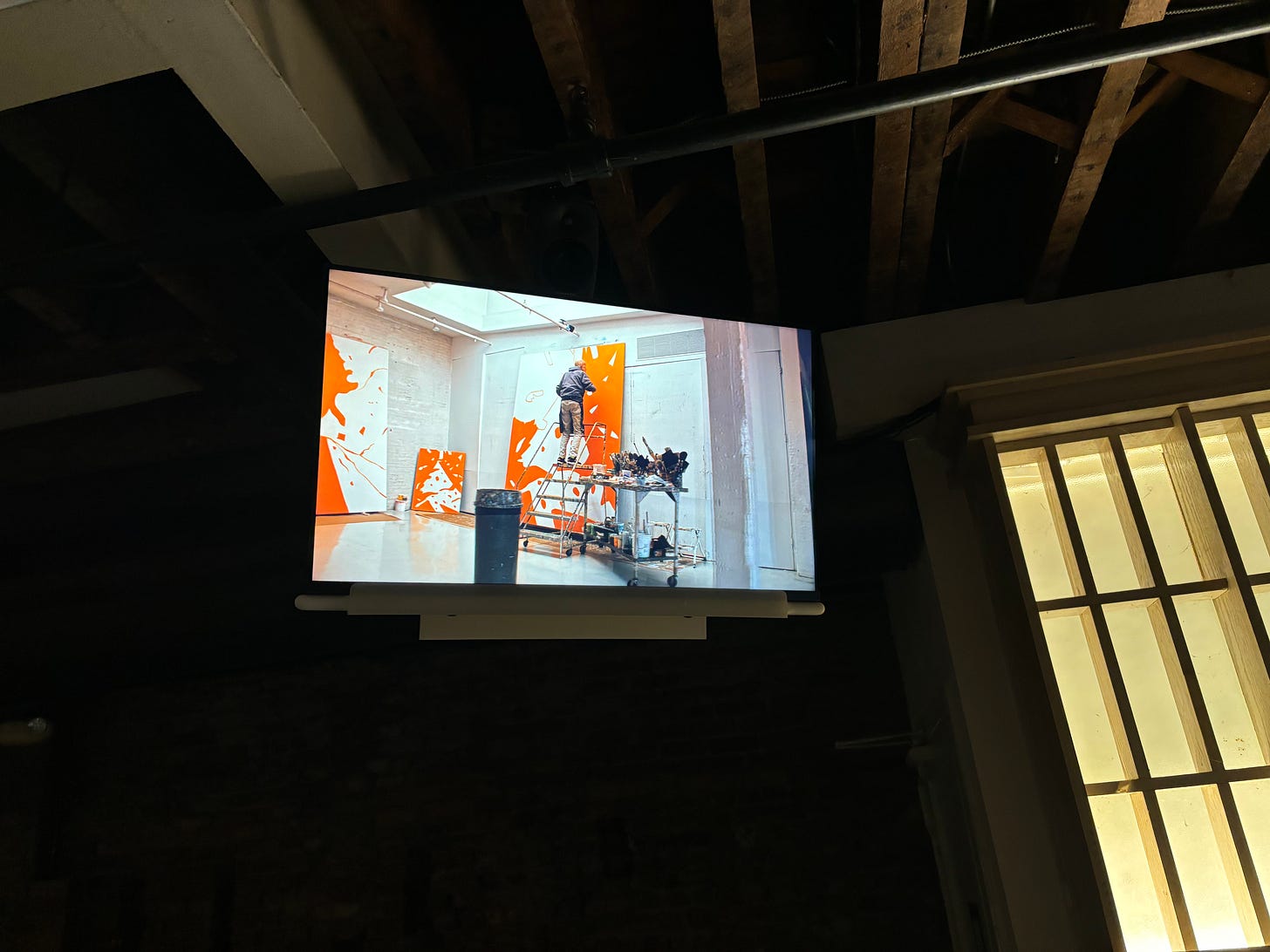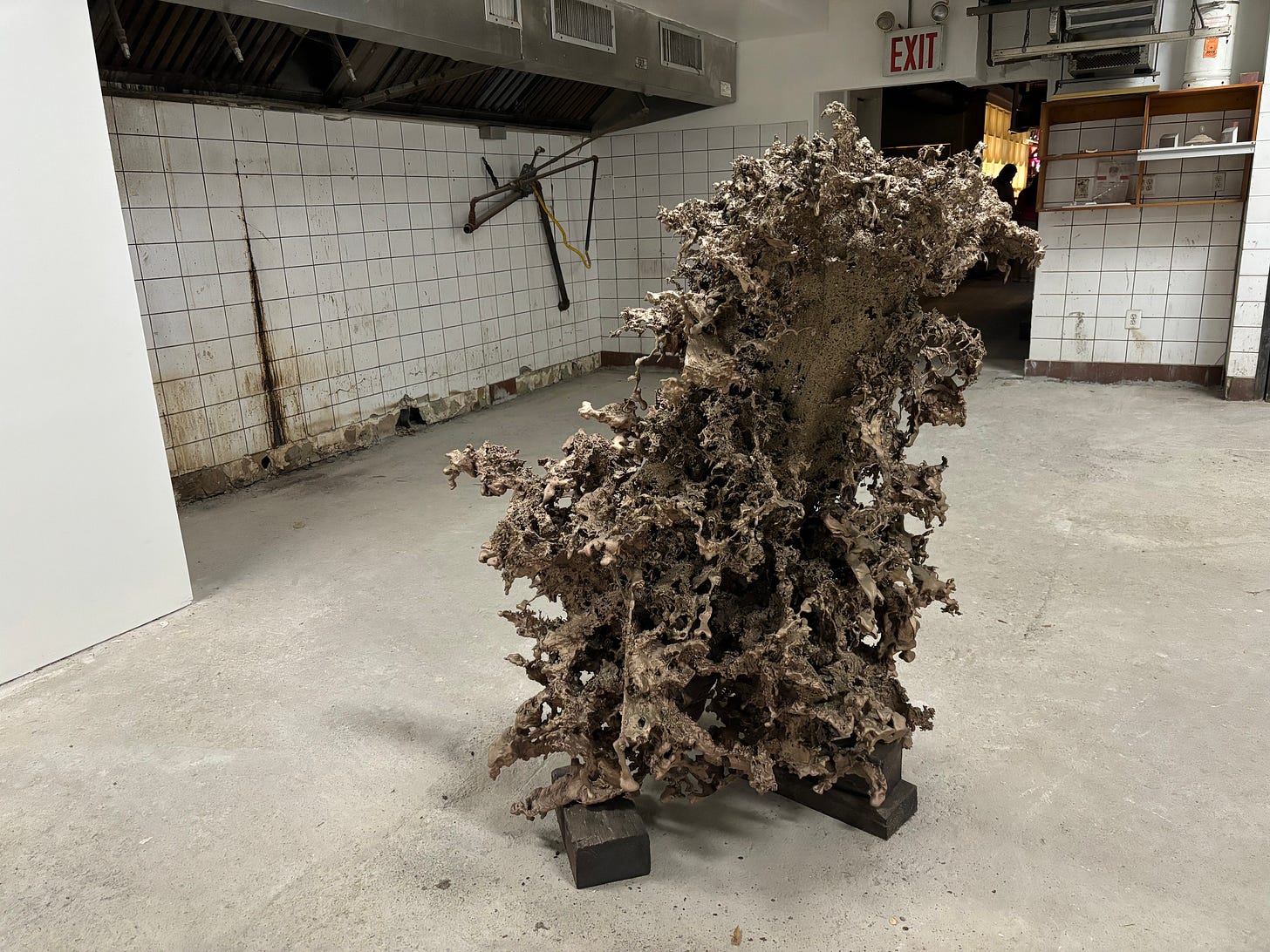by Sniff Baker
Visiting O’Flaherty’s is similar to visiting a museum. Everyone feels welcome regardless of their status or affiliation in the arts. If you’re a frequent gallery goer, you may notice O’Flaherty’s tangible lack of hierarchical authority leaching from shifty workplace dynamics and defacing the art. Instead you’re greeted by Billy and Jamian, greeted is probably a strong word, who, most of the time, man the gallery themselves, scurrying around the space as they plot their next show, or fix the leak on the second floor. The thing about O’Flaherty’s is that it exists to show good art. It’s basically a non-profit without the moral high ground or good manners.
The Bitch: There are three screens mounted on the wall, with which, from a distance, look to be mounted by Barney’s signature self-lubricating plastic, from behind an upholstered, foam-padded bar. Like a sports bar. Which I’m realizing for the first time is the perfect venue to view Barney’s work. Each screen plays a different video of Katz painting the work hung upstairs. The sound, on a different loop from the visual, is a menacing recording of Katz’s movements on his steel rolling ladder and of his stiff paint brushes on the canvas. Katz effortlessly embodies a Barneyesque character of otherworldly origin, diligently fulfilling a task for a reason unknown to the viewer. A dynamic familiar to many of Barney’s films.
Observing how Barney has framed Katz and his process in this film reminds me of Hannah Arendt’s description of art as it functions in human life.
“Because of their outstanding permanence, works of art are the most intensely worldly of all tangible things; their durability is almost untouched by the corroding effect of natural processes, since they are not subject to the use of living creatures, a use which, indeed, far from actualizing their own inherent purpose—as the purpose of a chair is actualized when it is sat upon—can only destroy them… No where else does the sheer durability of the world of things appear in such purity and clarity, nowhere else therefore does this thing-world reveal itself so spectacularly as the non-mortal home for mortal beings.” (Arendt, Hannah. The Human Condition. The University of Chicago Press, 1958)
Once you get upstairs things feel a little lighter. There’s a bucket that looks like it has pizza dough draped on it, the two Katz paintings from the video, and a Barney harness hanging on a wall next to an open window and a leak. On this floor I initially felt that the art didn’t work with the architecture as well as it did downstairs. The space is pretty big and I felt that it swallowed the paintings, one of which feels too large for the wall it’s on.
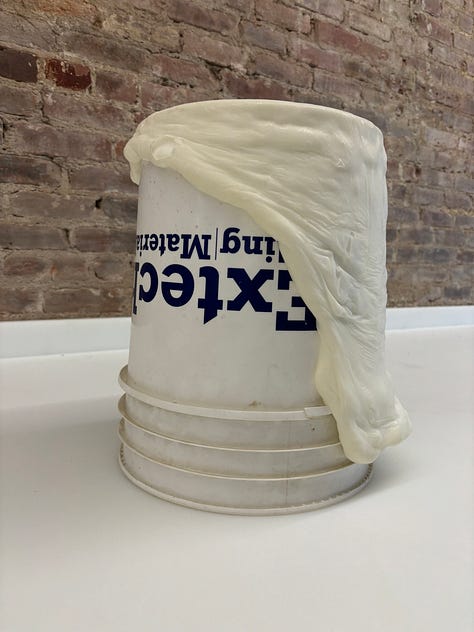
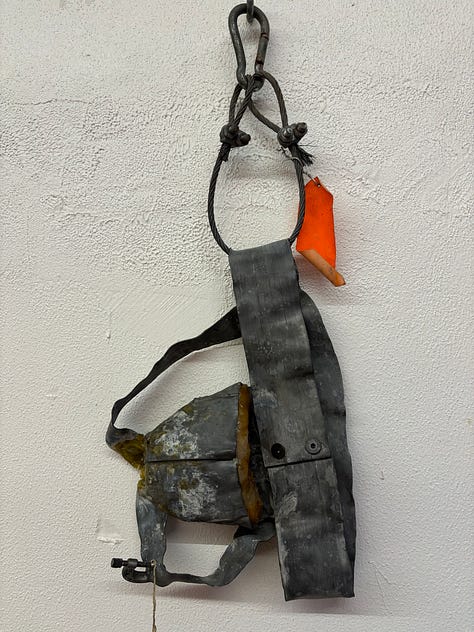
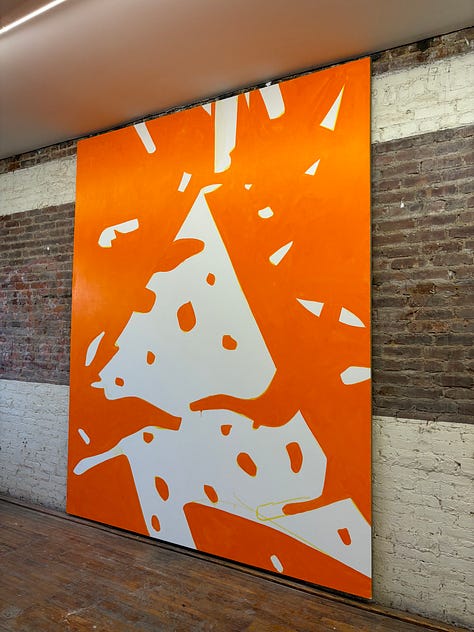
Back downstairs you’ll walk by a tree without any leaves and end up in a post-apocalyptic-abandoned kitchen, with a Barney Water Cast at its center. I’m historically not a fan of the Water Casts and at first I was a little confused why it was in the show at all. But thinking back on the show now, weeks later, it may have worked well to further create this Barney-Katz alter dimension; the abandoned kitchen, recognizable within our world, and the Water Cast, distinctly within theirs. It looks there was this violent grease trap event that froze mid-explosion. Overtime, everything in the kitchen was removed while the mid-flight grease was left untouched. Overall, the show feels as if it came together effortlessly, whether or not that was the case. With a good concept and vision, art really shouldn’t take much effort at all.
O’Flaherty’s is what I thought galleries were before I started working in the art world. They give art a reason to leave the studio. And what they’ve done for this show has actually enhanced the work by giving it a story that couldn’t exist anywhere else. This is what makes them a good gallery. They’re not trying to appeal to everyone, they have a distinct mission that draws people in; they actually exist to show good art.




